Car Shakes When Driving Slow (Solved!)
If your car shakes when driving at slow speeds and you have no idea why this happens, this guide will help you out. This shaking problem is quite common among car owners and most of them are always looking for answers to why it happens.
Your car shakes when driving slow due to loose or broken engine mounts, warped or damaged rotors, or bad tires. Other potential causes for the shaking at slow speeds include sticking braking calipers, bad CV joints, bent axle, ball bearing issues, and steering component issues.
The following post will shed more light on why your car shakes/wobbles/vibrates when you’re driving at slow speeds and how to fix this issue, plus other helpful information you need to know.
Why your car shakes when driving slow?

Your car shaking at slow speeds isn’t normal and there are many possible reasons to explain why it happens. Your car ought to move smoothly and straight.
But if you feel your car getting shaky at slow speeds, it’s probably signaling you of issues with the engine mounts, tires, braking system, axle, wheel bearings, or steering components.
In this section, we’ll take a deeper look at each of these potential causes and how they influence shakiness at slow speeds.
Worn or broken engine mounts
One of the possible causes for your car shaking at low speeds is the engine mount becoming loose or getting damaged.
The engine is usually held in place using metal mounts. There are also rubber pads under the motor that help hold the motor in place.
Needless to mention, loose or broken engine mounts will cause the engine to shake as you drive at slow speeds due to the “untamed” power inside the engine and the force it creates.
If the mounts are loose, then you just need to tighten them to end the vibration. Otherwise, if they’re broken, just replace them with new ones.
Bad tires
Another area to look into if your car shakes at slow speeds is the tire. Inspect the tires for the amount of tread they feature.
If they look worn out and have lost a significant amount of tread, they’re unable to grip the road properly and they could be the reason behind the shaking.
Uneven tread wear is another red flag and indicates that you need to align and balance your vehicle wheels. If one part of the tires feature flat spots compared to the others, that’s a sure sign of uneven tread wear.
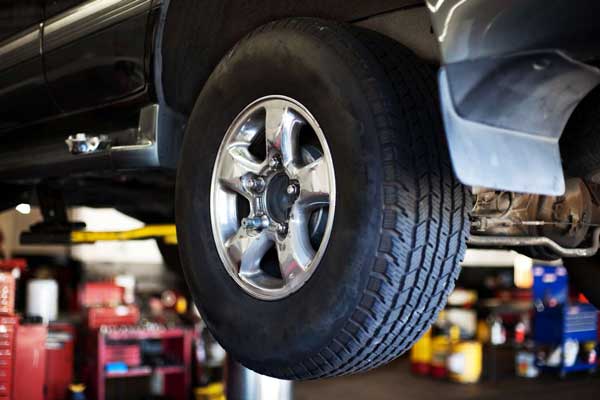
Taking your car to an auto shop to have the tires balanced will help keep them from wobbling.
Besides, you should also have the wheels aligned to help ensure your car moves in a straight path and minimize shaking. This is based on the fact that if your car can’t pull, it won’t shake.
And in case your tires appear excessively unevenly worn, then you may consider getting a whole new set of tires for your vehicle.
Malfunctioning braking system
Your car’s braking system could also be malfunctioning and causing shaking when driving at slow speeds. This is especially true if the shaking happens when you’re braking at slow speeds.
When inspecting your car braking system for issues, you want to focus on the condition of the rotors. If they’re out of round or have worn unevenly, it can lead to high points on your rotor. These pints then rub against the calipers and cause shaking.
Fortunately, you can have your rotors fixed by your mechanic. They usually remove them and resurface them to ensure they’re round and even.
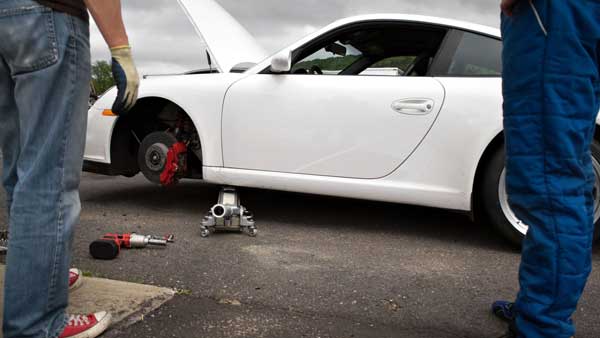
However, if they don’t have enough meat left for resurfacing process, replacement becomes the only option, otherwise, they’ll keep warping and causing shaking over time.
Other than rotors, your mechanic should also if sticking brake calipers are behind the shaking. The work of calipers is to close brake pads onto the rotor.
If they stay shut, pads will then start rubbing your rotor whenever you try to accelerate. The result is shaking which gets worse with increased speed. Sticking calipers should be fixed as soon as possible as they risk damaging the rotor.
Broken axle
If your car has axle-related issues such as a bad CV joint or different joints that have broken down, then they could also be behind the shaking when you drive at slow speeds.
The joints usually connect the axle to your vehicle wheels. If they break down, rubbing may happen in a one-wheel position. This will shakiness at slow speeds or when turning.
You can check if your car has a bad joint by slightly jacking your vehicle off the ground and see if its wheels show any kind of play. If the wheels move when you pushed them, then you have a bad joint that needs to be fixed.
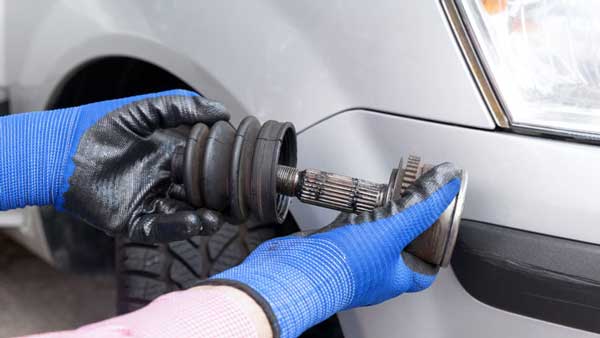
A bent axle is another axle-related issue that can lead to shaking. When this part is bent, it’s unable to spin when your car rolls. Instead, it features a joint that creates a bump during rotation.
The shaking resulting from this bump is mild at slow speeds but becomes more significant as you drive faster.
If your car has been involved in a crash recently, you’d want to ensure it hasn’t suffered a bent axle. Otherwise, this is significant damage that would prove your car to be beyond repair.
Failing steering components
If you only feel the shaking on your steering wheel, then it could be nothing more serious than just your steering wheel components going bad.
The steering wheel itself could be loose or its column could be worn out, making your car shake.
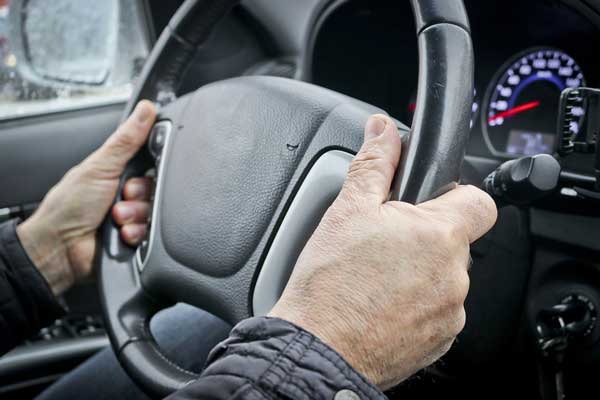
If your braking system, tires, and axle seem alright, you may want to inspect your steering wheel for potential issues that may be behind the shaky feel.
What to do if your car shakes when driving slow?
If your car shakes when driving at a slow speed, then you may be thinking of ways to fix this problem.
The truth is, you’ll first need to find what’s causing the shaking for you to resolve the problem.
The diagnosis process may be challenging depending on your level of experience, so we always recommend getting a trusted mechanic to do it for you.
Ideally, you should start by inspecting your car tire and see if they need alignment and balancing. Plus, you should check if they’ve got uneven wear and require replacement.

Next, you should inspect the brakes; look out for warped or damaged rotors, sticking calipers, and even worn-out brake pads. Follow this guide for more info on how to inspect your brake rotors for damage.
If you’ve identified a potential culprit so far, move on to other areas like the engine mounts wheel bearings and the various joints.
If your car was recently involved in a crash, you’d also want to check if you have a bent or damaged axle as it’s a key culprit behind the shaking at slow speeds.
If none of the above areas show any issues so far, have a look at your steering components for looseness or other problems that could result in shakiness.
Once you have identified the culprit, then you’ll just need to fix it or replace it if necessary, and the shaking problem will go away.
What does it mean if your car shakes when accelerating at low speed?
You may also experience a scenario where your car shakes when you try accelerating at low speed.
The most likely culprit making your car feel shaky when accelerating at low speed is the driveshaft or axle being bent or damaged.
If the shaking gets worse when you drive faster, this is more proof that indeed you have a bad axle.

Did you recently get involved in a minor crash or accident? If yes, your axle may have suffered some damage and gotten bent as a result. This will further help with your car diagnosis.
If you indeed have a damaged axle, then you’ll need to replace it as it can’t be repaired.
And you should make sure you replace it quickly before it causes further damage to your vehicle parts. The cost of replacing a broken axle usually falls between $500 and $1,000.
Why your car shakes when braking at slow speeds?
It is also common for car owners to complain about their cars shaking when braking at slow speed. if this is something you’re experiencing and don’t know why it happens, this is your part.
The most likely reason why your car shakes when braking at slow speeds is due to braking system issues. You probably have warped rotors.
For this reason, the first you’d want to look into is the rotors, brake calipers, and pads. Ensure they’re all in good condition.
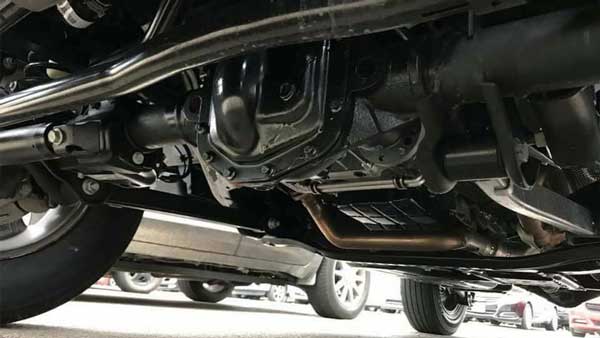
And if any of them shows signs of failure, you should have them replaced before they cause more damage or compromise your safety on the road.
If your braking system seems alright, you should also consider checking your tires and wheels for problems that are likely to cause shakiness when braking at low speeds and have them fixed as soon as possible.
Why your car wobbles when driving slow?
If your car has a wobbly or bouncing feel at low speeds of around 10 to 15 mph, you should also be concerned as this could be an indication of a serious underlying issue.
The perfect scenario is this car owner whose car experiences a little degree of wobble (feels like the car is constantly running over small rocks) when driving at slow speeds of around 15mph or below.
If you’re experiencing something similar, then you may want to check the condition of your brake rotors. If they’re out of round or warped, have the resurfaced or replaced. A wheel with improper balance could also be causing this issue.

We also come across this car owner having a similar issue. His car feels like it is driving on a wavy road when he’s driving at around 10 to 15mph. The rear part of the car feels like it’s slightly twisting back and forth.
The cause of this issue could be unbalanced tires, failing steering components, worn control arm bushings, broken tire belt, or bent wheel. Having a full diagnosis carried out on these key areas will help with finding the culprit.
Loose wheel nuts may also be behind the shaking, so make sure your lugs are properly torqued.
Why does your car shake at low speeds and idle?
Your car shaking at idle and low speeds also means it has a problem and you need to troubleshoot and fix the problem as quickly as possible.
Some of the key issues to look out for in this case include broken engine mounts, faulty fuel intake, loose or disconnected vacuum hoses, and a loose/damaged timing belt.
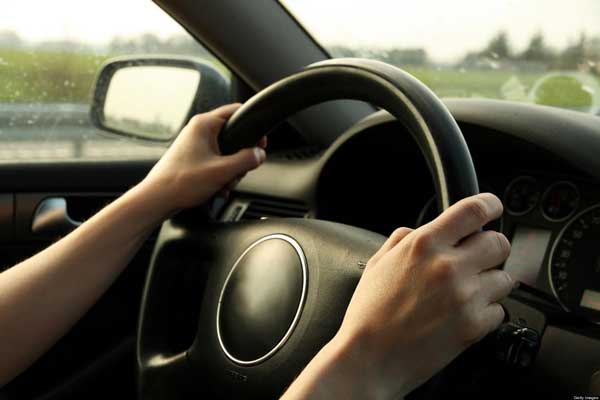
The common causes for your car vibrating between 30 and 40mph include improperly balanced wheels, uneven tire wear, out-of-alignment wheels, bad CV/axle, and wheel bearing issues.
If your car shakes when driving slow, it could be a sign of a problem with the tires, suspension system, or steering system. However, this issue could also be associated with other common problems, such as car shakes when braking at high speed or when starting the car. To learn more about these potential causes and what you can do to fix them, check out our articles on car shakes when braking at high speed and car shakes when starting. These articles provide helpful tips and insights on how to troubleshoot and solve these issues, so you can ensure the safety and comfort of your vehicle and prevent any potential accidents or damages.Related Questions:
The common causes for your car vibrating between 30 and 40mph include improperly balanced wheels, uneven tire wear, out-of-alignment wheels, bad CV/axle, and wheel bearing issues.
If your steering wheel shakes at slow speeds, then it could be due to an issue with the wheels, braking system, tire, axle/driveshaft, or worn suspension components. You should take your car to a mechanic for the problem to be diagnosed and resolved.
Final Verdict
Different things can cause your car to shake when driving slow. When you experience this issue, the key areas to look into include the worn engine mounts, tires, braking system, bent axle, broken CV joints, and bad steering components. To fix your car-shaking-when-driving-slow issue, you’ll first need to find which of these potential causes is the root cause of this shakiness.
Having your mechanic diagnose your car will help you pinpoint the culprit behind the shaking easily and have it fixed. We advise you to fix this issue as soon as possible before things get worse. Braking system problems should be fixed ASAP as they bring safety concerns to the roads.

